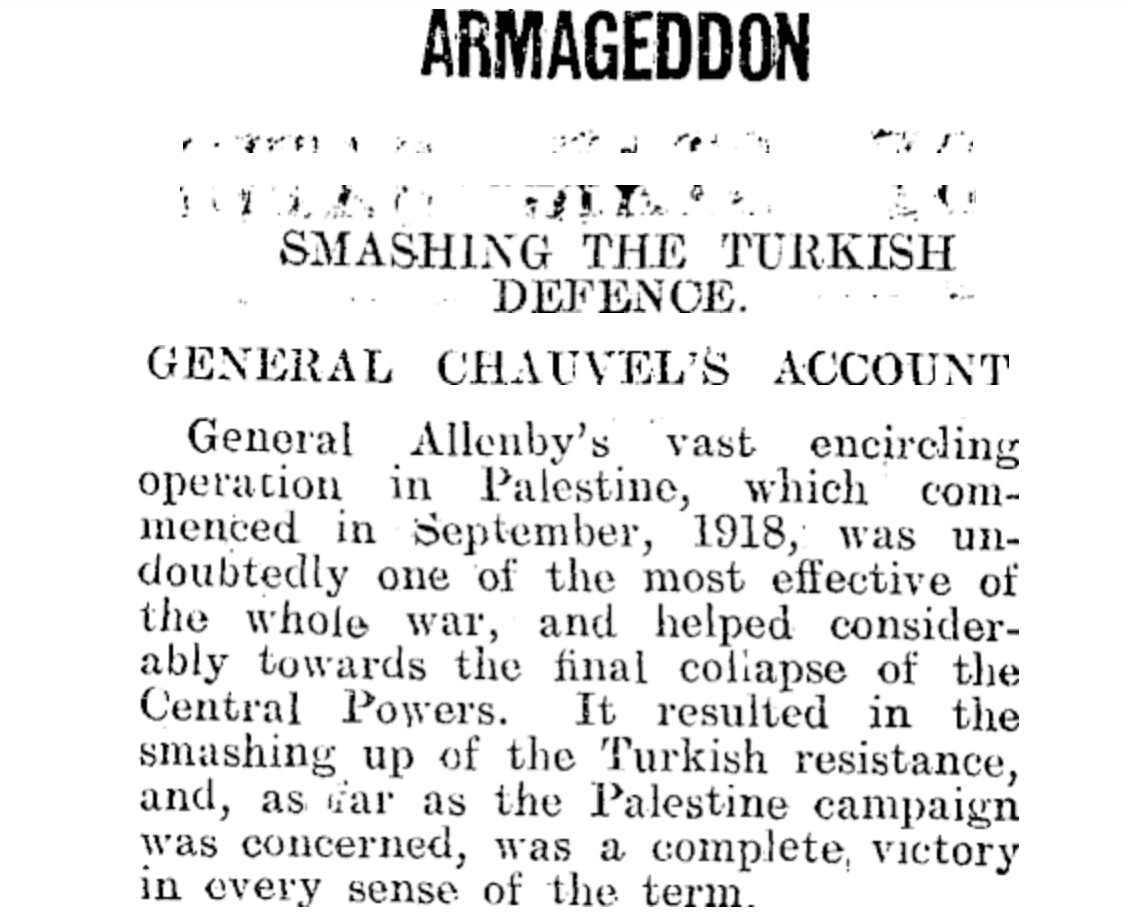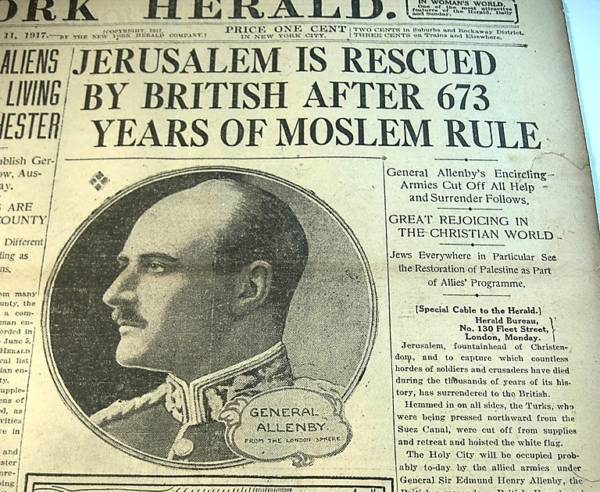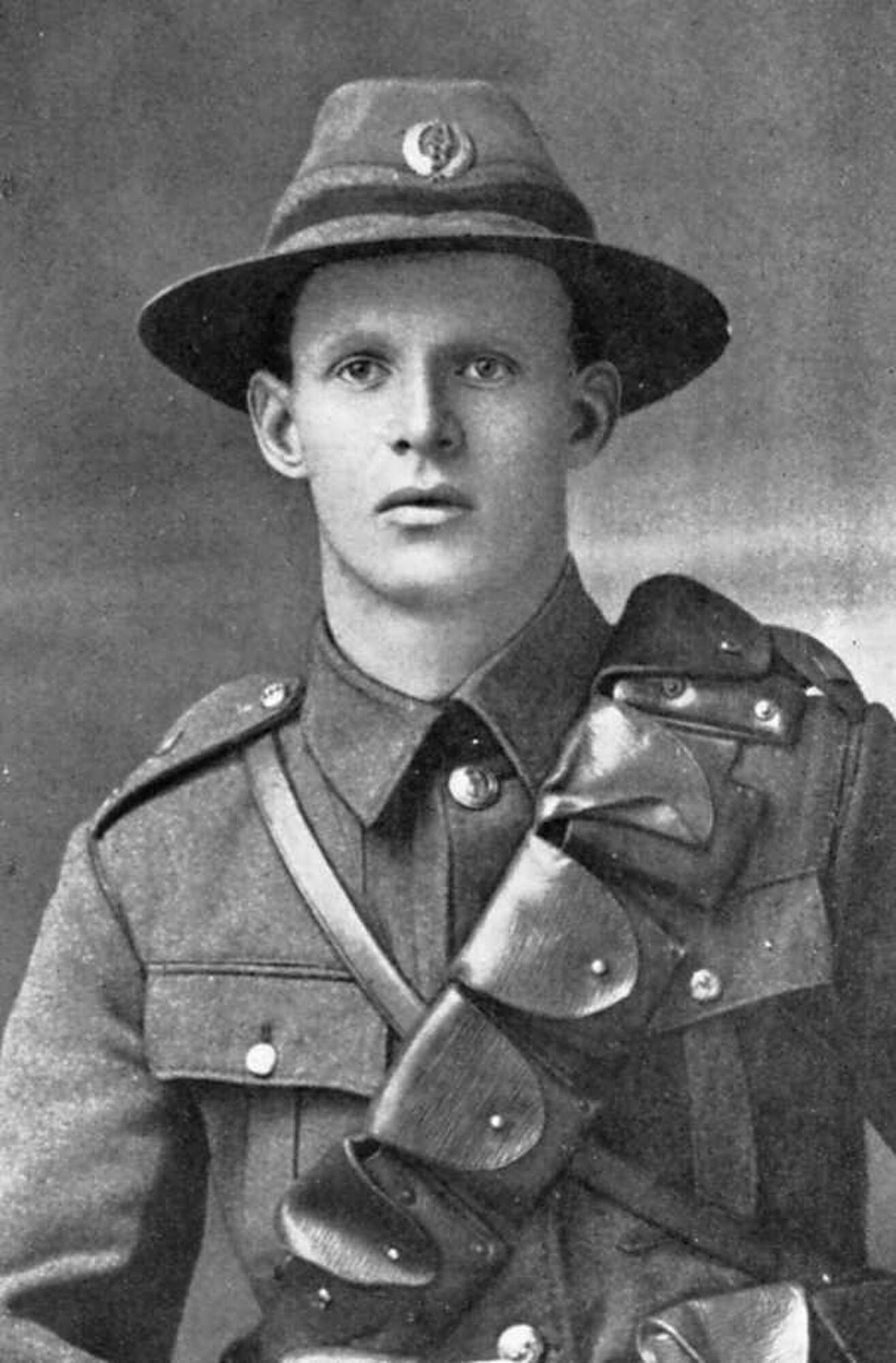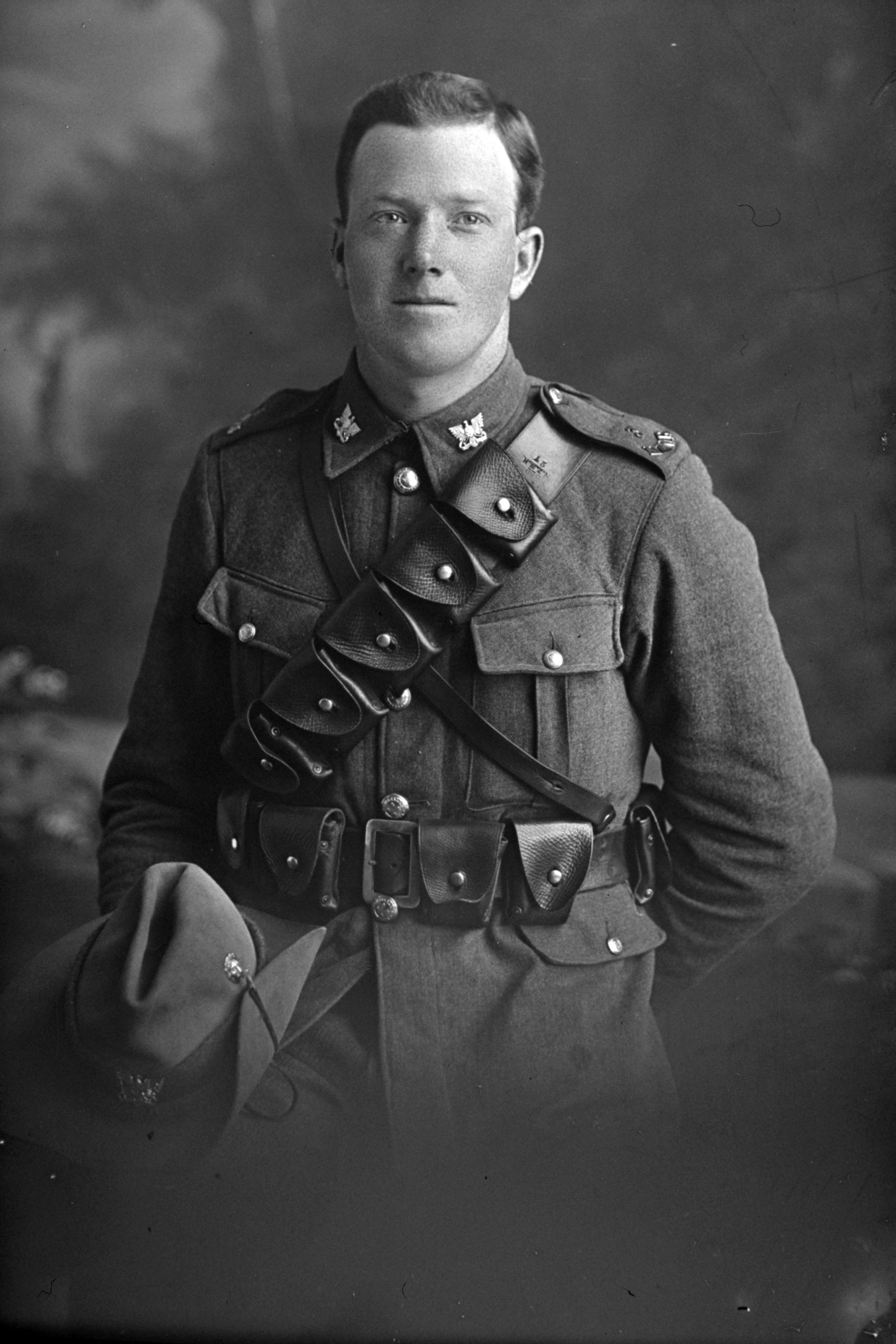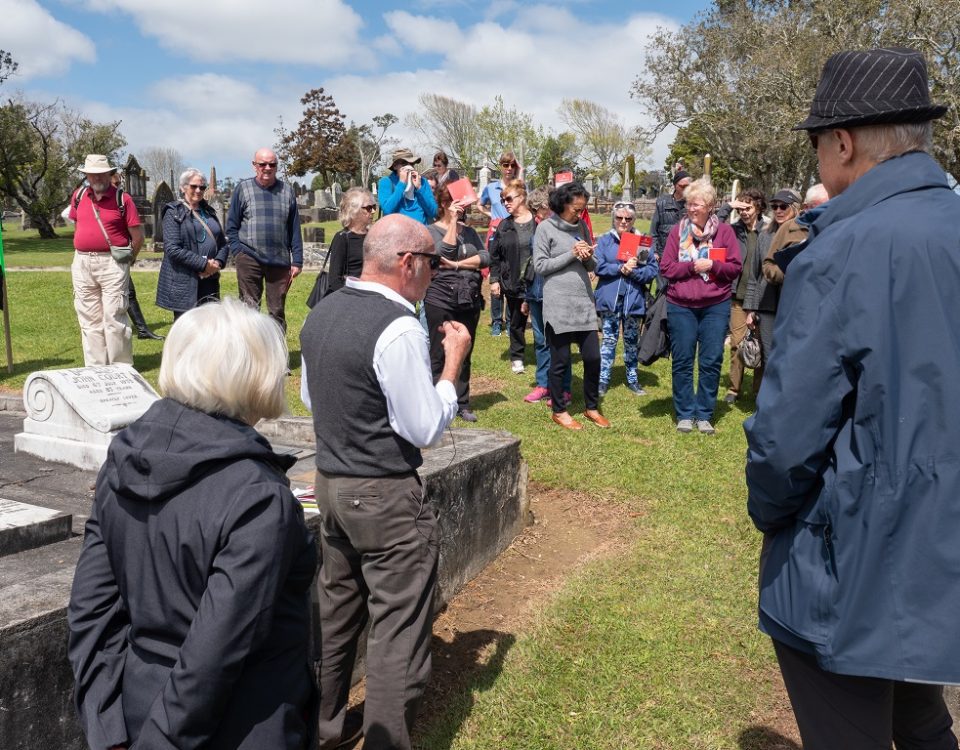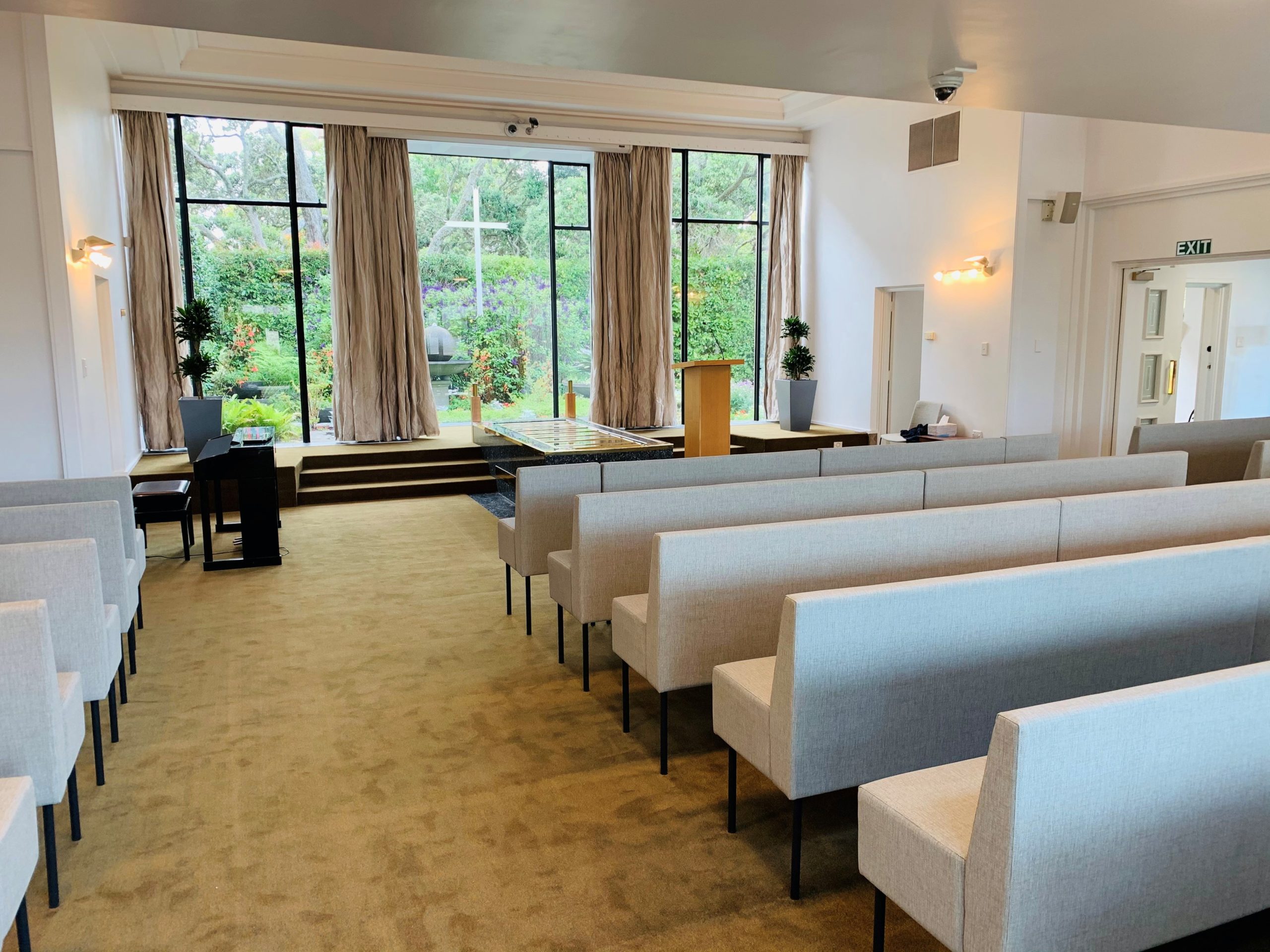On Anzac Day we commemorate and honour those who risked their lives for us. Many died on the battlefield of wounds or sickness, never to see home and family again. Others returned, having sacrificed the best years of their lives. None should be forgotten.
At Purewa Cemetery, choosing from so many worthy examples is not easy, nor should it be. But focusing on the lives of a few helps us to better remember and understand all.
And so, this Anzac Day we turn our attention to the Holy Land and to the Battle of Megiddo (Armageddon). Among the battles of the Sinai and Palestine Campaign, Megiddo was the decisive turning point and it was fought by the men we remember at Purewa today. As we shall see, they changed the world.
BIBLICAL PROPORTIONS
This epic drive of allied forces out of Egypt ended the Ottoman Empire. More than that, it dramatically reshaped the destiny of the Middle East. The campaign map was straight out of the Bible: Beersheba, Jerusalem, and Megiddo, then across the Jordan River and on to Damascus. Unquestionably, it was New Zealand’s most successful operation in the First World War, and a victory for which the unflappable enlisted troops deserve full credit.
Central to the operation were New Zealand’s mounted forces, who began fighting in the Middle East in 1915 on the more familiar shores of Gallipoli. Among the luckless troops landed there were elements of the Auckland Mounted Rifles Regiment, comprising 600 horses and some 530 men. Not to be confused with cavalry who fight on horseback, mounted riflemen charged into battle on horses, dismounted, and fought as infantry. Plunged into the thick of the conflagration from the start, Auckland’s troopers fought at Chunuk Bair and Hill 60. These fiercely contested fields took their toll. Some 202 members of the regiment lost their lives during the company’s seven-month fight at Gallipoli.
Without doubt, Gallipoli was a disaster. Eight months of harsh, desperate, and futile conflict left at least 130,000 dead (including 2,779 New Zealanders, the equivalent 12,000 as a proportion of today’s New Zealand population). The battle ended with retreat.
1916 – 1918: THE HOLY LAND
After the tragic fight in the Dardanelles, the mounted rifles regrouped in Cairo, bolstered by reinforcements. Soon, they would set out across the desert to take their place in remaking the map of the 20th century. And they were not alone. Joining with their mates as the combined New Zealand Mounted Rifles Brigade, the Aucklanders took their place as battle-hardened warriors in the Egyptian Expeditionary Force under the overall command of Field Marshal Edmund Allenby. Their task: take the ancient Holy Land from the Ottomans and drive on across the Jordan River into Syria.
Before that, there was a key test at Beersheba, known to every fighter for its biblical associations with the Jewish patriarch, Abraham. The New Zealanders performed exceptionally well. Allenby remarked, “The men of New Zealand fought and marched to final and complete victory. Nothing daunted these intrepid fighters; to them nothing was impossible! I am proud to have had the honour of commanding them.”
Thus, in stark contrast to the failure at Gallipoli, the Holy Land campaign opened with a marvellous success. It did not get the same coverage Gallipoli received, however. Since the forces had no war correspondents in tow, the whole thing might have passed without fanfare if not for the soldiers’ immediate objective after Beersheba.
CHRISTMAS PRESENT
It was like a page from a fantastical novel. In 1917, British Prime Minister David Lloyd George commanded General Allenby to take Jerusalem “as a Christmas present” for the British people. At the same time, Foreign Minister Balfour declared that “His Majesty’s Government views with favour the establishment in Palestine of a National Home for the Jewish people.” He further pledged Britain to “use their best endeavours to facilitate the achievement of that object.” Those best endeavours included the reconquest of Jerusalem.
Lloyd George was an Evangelical. He wrote in his memoir that he’d “been trained even more in Hebrew history than in the history of our own country…I could tell you all the kings of Israel. But I doubt whether I could have named half a dozen of the kings of England, and not more of the kings of Wales.” Knowing that he was not alone in those sentiments impacted his decision to direct Allenby to Jerusalem. Lloyd George knew it would have a tremendous morale-boosting effect across the British realm. Indeed, this was the only reason to take the holy city. In reality, it had no strategic importance.
FOR GOD AND COUNTRY
We hear New Zealand’s own biblical voice with startling clarity as it echoes from Auckland Mounted Rifles commander Charles Mackesy. For him, the Battle of Megiddo was millenarian destiny. Not that this detracted from his soldiering. His beliefs evidently inspired an assured leadership style. Indeed, Mackesy was a brave and enterprising commander, famously saving his men from a Turkish trap by having them ride out at odd intervals in different directions, effectively confounding the enemy gunners.
Beloved also for browbeating NZ Prime Minister William Massey into providing adequate boots for the troops, his well-shod men were inclined to listen when he preached to them. Usually, as his later life shows, his sermons addressed the regiment’s movements in light of biblical prophecy.
That’s because, besides being the brilliant de facto leader of the united expeditionary forces, Mackesy was a devoted proponent of Israel’s role in the End Times. Never shy, after finally crossing the border of Palestine in January 1917, Mackesy vociferously praised God for being allowed to enter the Holy Land. He had a knack for proving his point. Already, before the campaign began, he predicted that the troops would spend Christmas in Jerusalem by 1917. That’s exactly what happened. (Incidentally, Mackesy had like-minded kin for support. The North Auckland Mounted Rifles (NAMR) was jokingly dubbed “Nearly All Mackesy’s Relations.”)
Not to be outdone, a Jewish member of New Zealand’s expeditionary forces, possibly inspired by Mackesy’s prophecy, had a flag tailored by a Jewish haberdasher while still in Cairo. Thus, for a short period after Jerusalem’s capture, Gallipoli veteran Corporal Louis Isaac Salek’s blue-and-white Star of David flag adorned Jerusalem’s Tower of David. It was a remarkable premonition of the founding of the State of Israel thirty years later.
REPERCUSSIONS
All this is typical of attitudes at the time. From official coverage in British newsreels (“The New Crusaders: With the British Forces in the Palestine”), to global headlines (“Jerusalem Rescued After 673 Years of Moslem Rule”), all characterised the Battle of Jerusalem as a holy war.
Despite the strange tone of these ideas to modern minds, we can still recognise them in what drives today’s politics in the Middle East. At the same time, the Battles of Beersheba, Jerusalem and Megiddo are very much a part of New Zealand’s Anzac experience. As much as anything related to the First World War, this campaign’s outcome still haunts global headlines, affecting every aspect of Muslim, Christian and Jewish relations and the stability of the Middle East.
LEST WE FORGET
All told, 334 of the Auckland Mounted Rifles died in the war. Two-thirds of those killed perished at Gallipoli. Some 555 were wounded—53 of them recovered only to be wounded again. Their initial great success at Beersheba opened the way to take on the Ottoman armies at Har Megiddo (Armageddon). In the final stage of that battle, the Anzacs destroyed three Ottoman field armies, taking some 76,000 prisoners.
LEST WE FORGET, WE HONOUR THE LIVES OF THESE MEMBERS OF THE AUCKLAND MOUNTED RIFLES AND NEW ZEALAND EXPEDITIONARY FORCES RESTING AT PUREWA
COLONEL WILLIAM “BILL” MURPHY 8/921
Born 26 January 1894 – Died 18 July 1991
Murphy’s survival of Gallipoli and later triumphs are extraordinary. A true hero who survived against all odds. Notably, King George the Fifth presented Murphy with the Military Cross in July 1919 at Buckingham Palace.
BRANCH:
Army
First regiment: Auckland Mounted Rifles, N.Z.E.F.
CAMPAIGNS:
World War I, 1914-1918
Gallipoli
Egypt Sinai & Palestine
France and Germany
Occupation of Germany
World War II, 1939-1945
Pacific Theatre of War
MEDALS AND AWARDS:
Commander of the Most Excellent Order of the British Empire (CBE)
1914-1915 Star
British War Medal (1914-1920)
Victory Medal
1939-1945 Star
Pacific Star
War Medal 1939-1945
New Zealand War Service Medal
Military Cross (MC)
Citation: For great gallantry and fine leadership. During the operations on the 23rd October 1918 near Salesches France, when his Company came under very heavy machine-gun fire, he rushed his support platoon into the front line of attacking troops. Later, when machine-gun fire again checked the advance he swung his troops to the right and attacked the strong position in enfilade. By this movement he secured a large number of machine-guns and prisoners, killed many of the enemy and drove the remainder from their positions.
VISIT Bill Murphy at Purewa: Block M Row 25 Plot 41
(Click Map Link Below of Guidance)
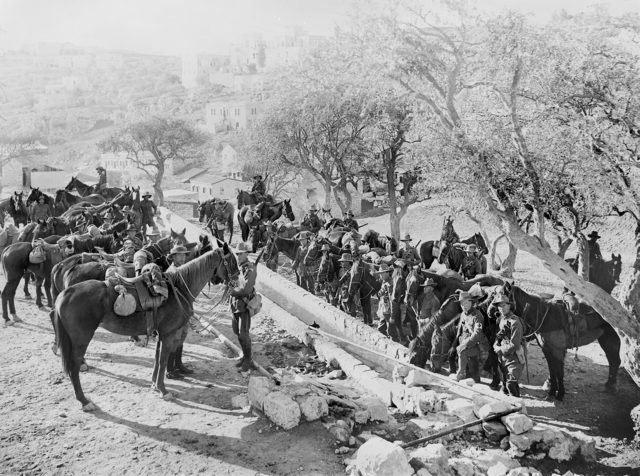
New Zealand’s mounted riflemen water their horses in the Holy Land.
LIEUTENANT ARTHUR PARRISH 13/2007
Born 2 April 1893 – Died 25 October 1984
A farmer and pilot, Parrish served in both world wars. On 31 MAY 1916 Parrish was the first to be wounded in the Sinai and Palestine Campaign.
BRANCH:
Army
Air Force
First regiment: Auckland Mounted Rifles, N.Z.E.F.
CAMPAIGNS:
World War I, 1914-1918
Gallipoli
Egypt
Sinai-Palestine
MEDALS AND AWARDS:
1914-1915 Star
British War Medal (1914-1920)
Victory Medal
VISIT Arthur Parrish at Purewa, Block X Row 67 Plot 83
(Click Map Link Below of Guidance)
TROOPER ARTHUR ISAAC FOSTER 13/2565
Born 19 March 1893 – Died 12 August 1918
Young Arthur attended King’s College from 1907. When he enlisted in Auckland Mounted Rifles he worked as a grocer.
BRANCH:
Army
First regiment: Auckland Mounted Rifles, N.Z.E.F.
CAMPAIGNS:
World War I, 1918
Egypt
Sinai-Palestine
MEDALS AND AWARDS:
1914-1915 Star
British War Medal (1914-1920)
Victory Medal
Trooper Foster was wounded at Jaffa in the strategically critical battle to take the Mediterranean coastal city in preparation for the Battles of Jerusalem and Megiddo. The combined New Zealand Mounted Rifles Regiment were the front line. Hotly contested, the troops battled at close ranks with bayonets. Unfortunately, Trooper Foster suffered severe damage to the arm and chest and was evacuated back to New Zealand on the S.S. Tofua in December 1917. Suffering from debilitating lung damage, Foster died of his wounds eight months later, aged 25.
VISIT Arthur Isaac Foster at Purewa Block E Row 34 Plot 58
(Click Map Link Below of Guidance)
LIEUTENANT ROBERT GILLESPIE 13/312
Born 12 September 1893 – Died 27 October 1920
Rapidly promoted to lieutenant in the field, Gillespie eventually joined the solider settler program and began farming near Whangarei. Having complained of severe head pains, Gillespie committed suicide with his service sidearm.
BRANCH:
Army
First regiment: Auckland Mounted Rifles, N.Z.E.F.
CAMPAIGNS:
World War I, 1914-1918
Gallipoli
Egypt
Sinai-Palestine
MEDALS AND AWARDS:
1914-1915 Star
British War Medal (1914-1920)
Victory Medal
VISIT Robert Gillespie at Purewa, Block F Row 45 Plot 192
(Click Map Link Below of Guidance)
PEACE
Whether Gillespie’s tragic suicide, young Foster’s months of suffering with war wounds, or Parrish and Murphy’s long lives and careers, these examples show the wide spectrum of experience in a time of global strife.
The sacrifices imposed by war can make or break a life. Too often, it breaks them, even if the scars remain hidden and deep. Even the most successful carried with them memories of killing dozens in close combat. Truly, none survived unscathed.
There are many lessons brought to life by remembering these brave ones on Anzac Day. First is perhaps that peace cannot impose itself upon the violent, for to do so is itself an act of violence (even if necessary). At the same time, the peaceful remain always susceptible to the imposition of violence. So, we can only remember with gratitude those who sacrificed for us—they did not want this war, it was thrust upon them by the madness of leaders in far-off places. Remembering them challenges us to ask ourselves about our values and willingness to defend them. It calls us to ponder the nature of our world and what we might do to make it a better place.
CREDITS AND REFERENCES:
Lloyd George and religious feeling around WW1:
David Lloyd George, War Memoirs of Lloyd George (London 1936), vol. II, 1090-1.
Bar-Yosef, Eitan. “The Last Crusade? British Propaganda and the Palestine Campaign, 1917-18.” Journal of Contemporary History 36, no. 1 (2001): 87-109. Accessed November 21, 2020. http://www.jstor.org/stable/261132.
Donald M. Lewis, The Origins of Christian Zionism: Lord Shaftesbury and Evan- gelical Support for a Jewish Homeland (Cambridge: Cambridge Univ. Press, 2014), 3.
Gillespie report:
Northern Advocate, 30 October 1920, Page 2
War Records:
Archives New Zealand
Salek: The Wellington Freelance, Thursday, December 19, 1918.
Mackesy: https://teara.govt.nz/en/biographies/3m19/mackesy-charles-ernest-randolph
Images:
Film Title: Roger Smither (ed.), The Imperial War Museum Film Catalogue, vol. I, The First World War Archive (Trowbridge 1994), item IWM 17. Ministry of Information.
Richard Lionheart in WW1: Punch, December 1917, 415.
Headline New Your Herald: “Jerusalem is Rescued By British After 673 Years of Moslem Rule,” New York Herald, November 11, 1917, A1.
Portraits: Auckland War Memorial Museum and New Zealand National Library
Parrish additional images: Wings Over New Zealand Aviation Forum

